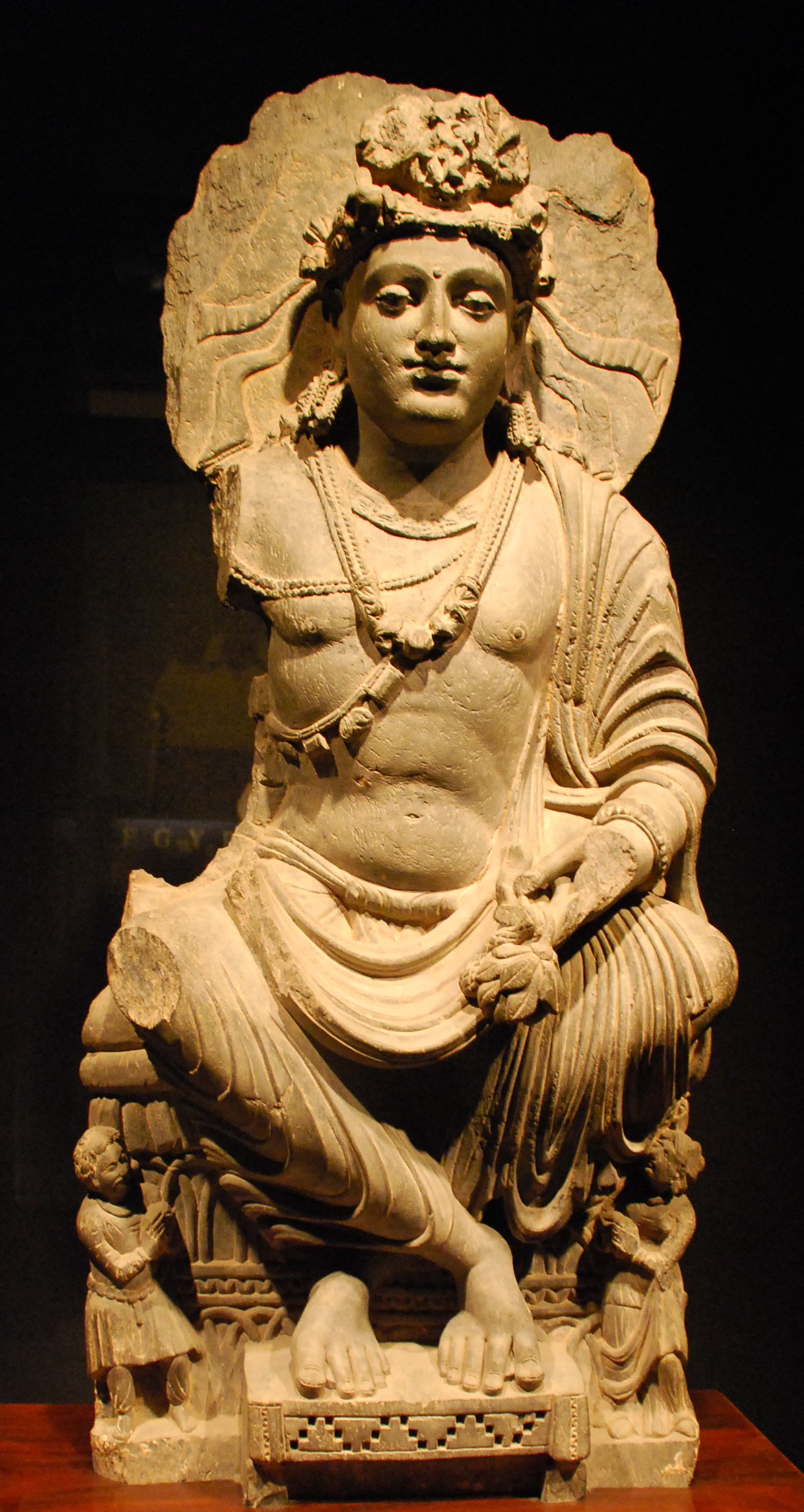Previous Episodes
- December 2025
- November 2025
- October 2025
- September 2025
- August 2025
- July 2025
- June 2025
- May 2025
- April 2025
- March 2025
- February 2025
- January 2025
- December 2024
- November 2024
- October 2024
- September 2024
- August 2024
- July 2024
- June 2024
- May 2024
- April 2024
- March 2024
- February 2024
- January 2024
- December 2023
- November 2023
- October 2023
- September 2023
- August 2023
- July 2023
- June 2023
- May 2023
- April 2023
- March 2023
- February 2023
- January 2023
- December 2022
- November 2022
- October 2022
- September 2022
- August 2022
- July 2022
- June 2022
- May 2022
- April 2022
- March 2022
- February 2022
- January 2022
- December 2021
- November 2021
- October 2021
- September 2021
- August 2021
- July 2021
- June 2021
- May 2021
- April 2021
- March 2021
- February 2021
- January 2021
- December 2020
- November 2020
- October 2020
- September 2020
- August 2020
- July 2020
- June 2020
- May 2020
- April 2020
- March 2020
- February 2020
- January 2020
- December 2019
- November 2019
- October 2019
- September 2019
This episode looks at the trip that the Buddha’s teachings took from the Indian subcontinent through the Kushan empireand the land of Gandhara, and over to East Asia—to the Yellow River and Yangzi River regions as well as the Korean peninsula.
Buddhist Art and Architecture
Ruwanweli Maha Saya, aka Mahathupa, or “Great Stupa” in Anuradapura, Sri Lanka. Photo by author.
Some of the oldest evidence we have for Buddhism are monuments. The Ruwanweli Maha Saya is believed to have been built in about 140 BCE in Sri Lanka, where the Pali Canon was put together and eventually disseminated. It claims to have the largest collection of the Buddha’s relics anywhere in the world, and rises up 103 meters high. It was built at the heart of the ancient capital of Sri Lanka.
This is a very classic stupa shape, and the shape most commonly found in South and Southeast Asia.
Early Buddhist art and artifacts can be hard to find. There are the Ashoka Pillars, which have references to Buddhist theology, and stupas, but most of the written documents have turned to dust, as they were written on leaves or paper, which typically don’t do well outside of very specific conditions.
The historical Buddha represented as a wheel wrapped with a garland, from Madhya Pradesh, in Central India, 2nd Century CE. In the Freer-Sackler Gallery of the Smithsonian in Washington, DC. Photo by author.
Where we do find art, it may not always be obvious. Take this early depiction of the Buddha as a wheel, with a garland. The idea of existence as a wheel that kept turning and turning, and therefore kept bringing people back to an existence of suffering again and again, is at the center of a lot of Buddhist teaching, and so wheels are often used as symbols. Sometimes they will have eight spokes, representing the eightfold path, but here we see it is just a wheel.
Gandhara and the Kushan Empire
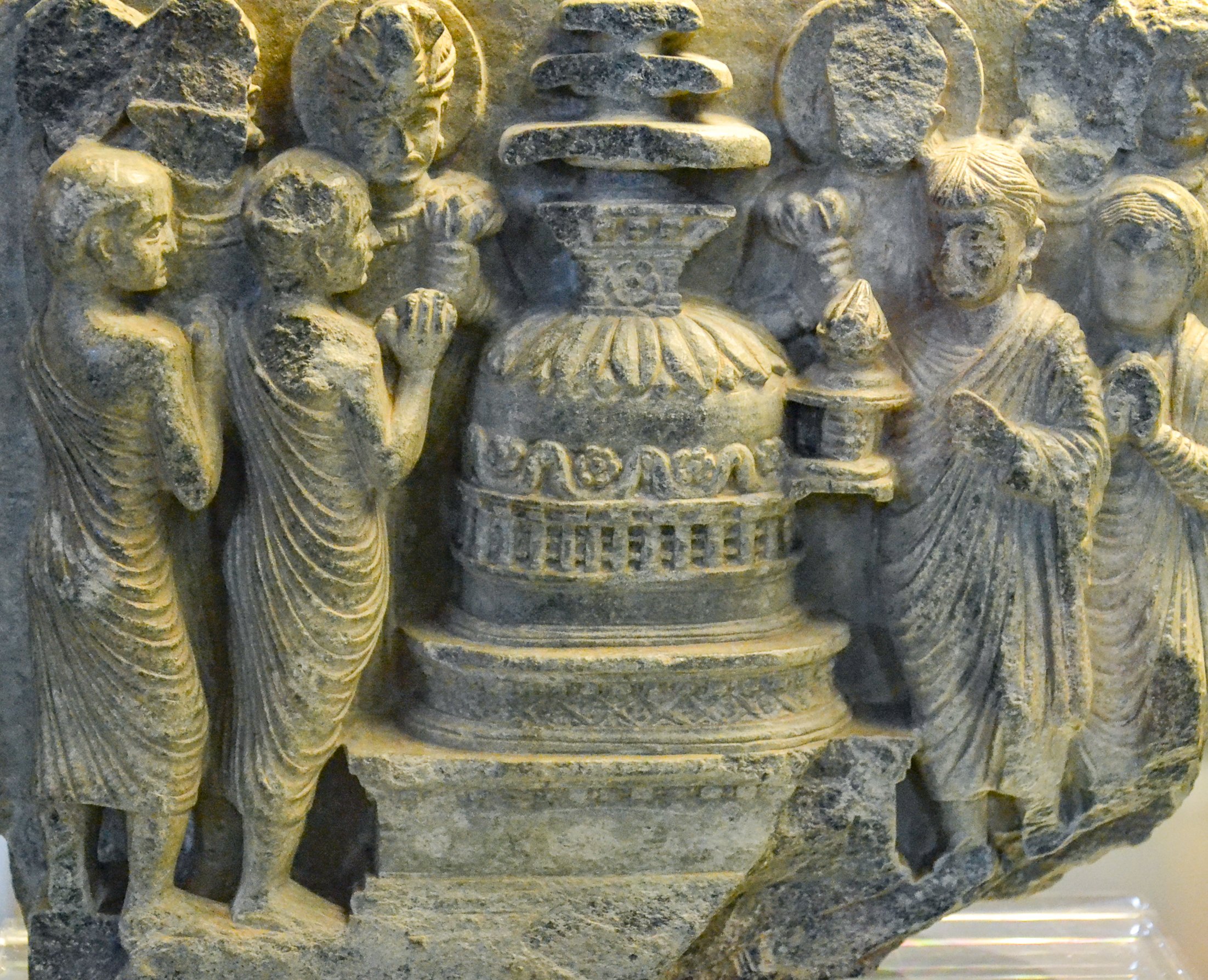
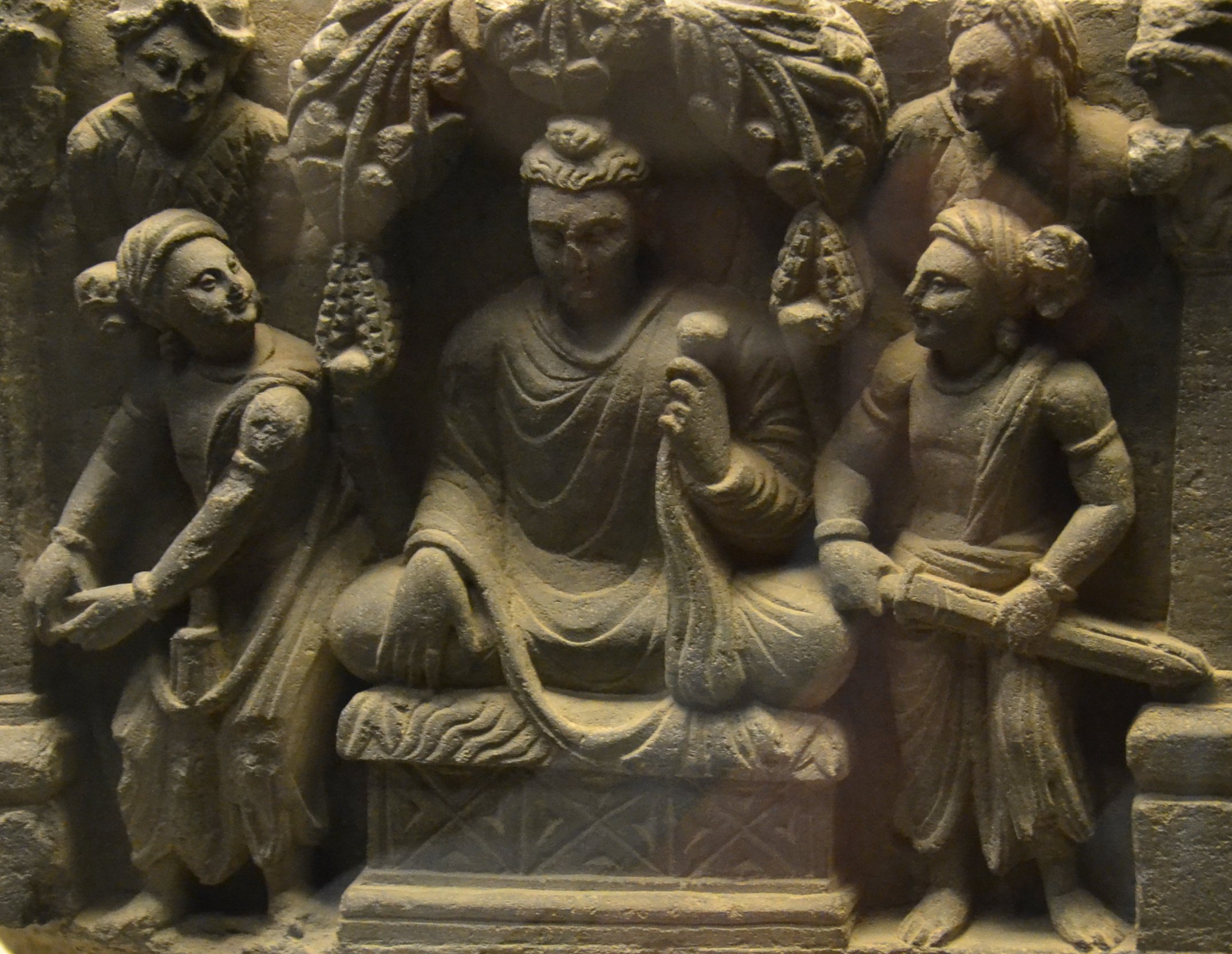

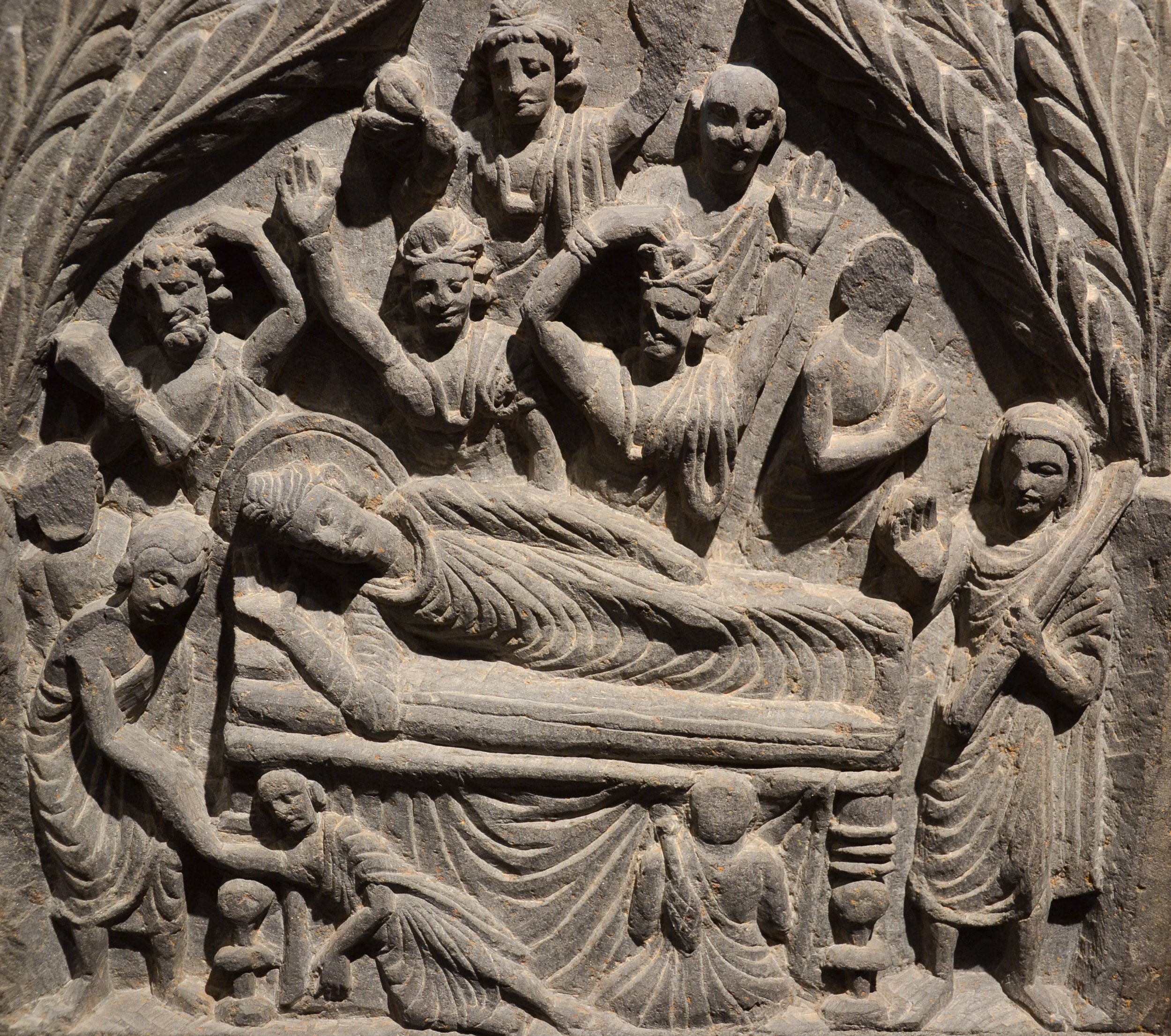

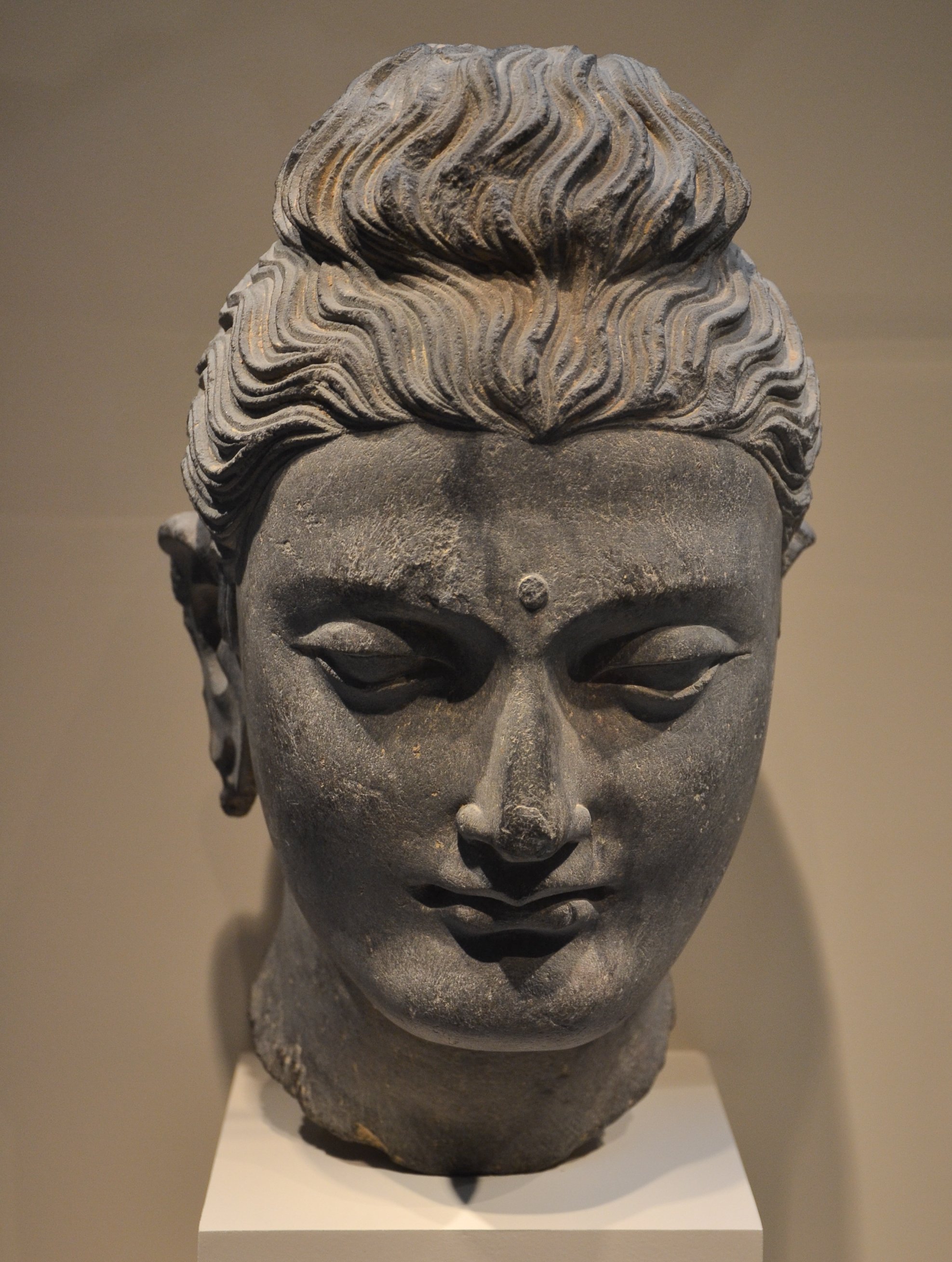
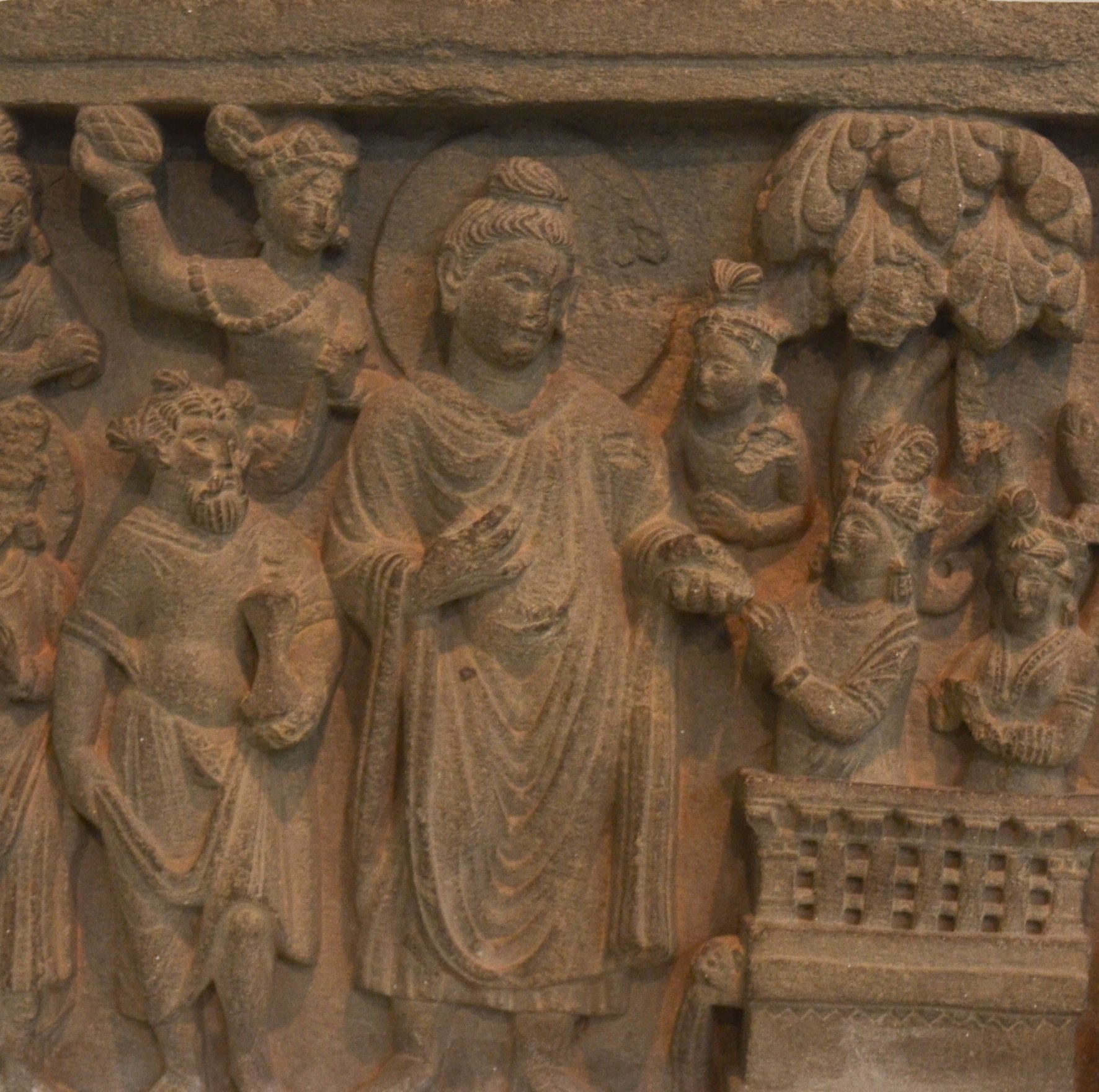
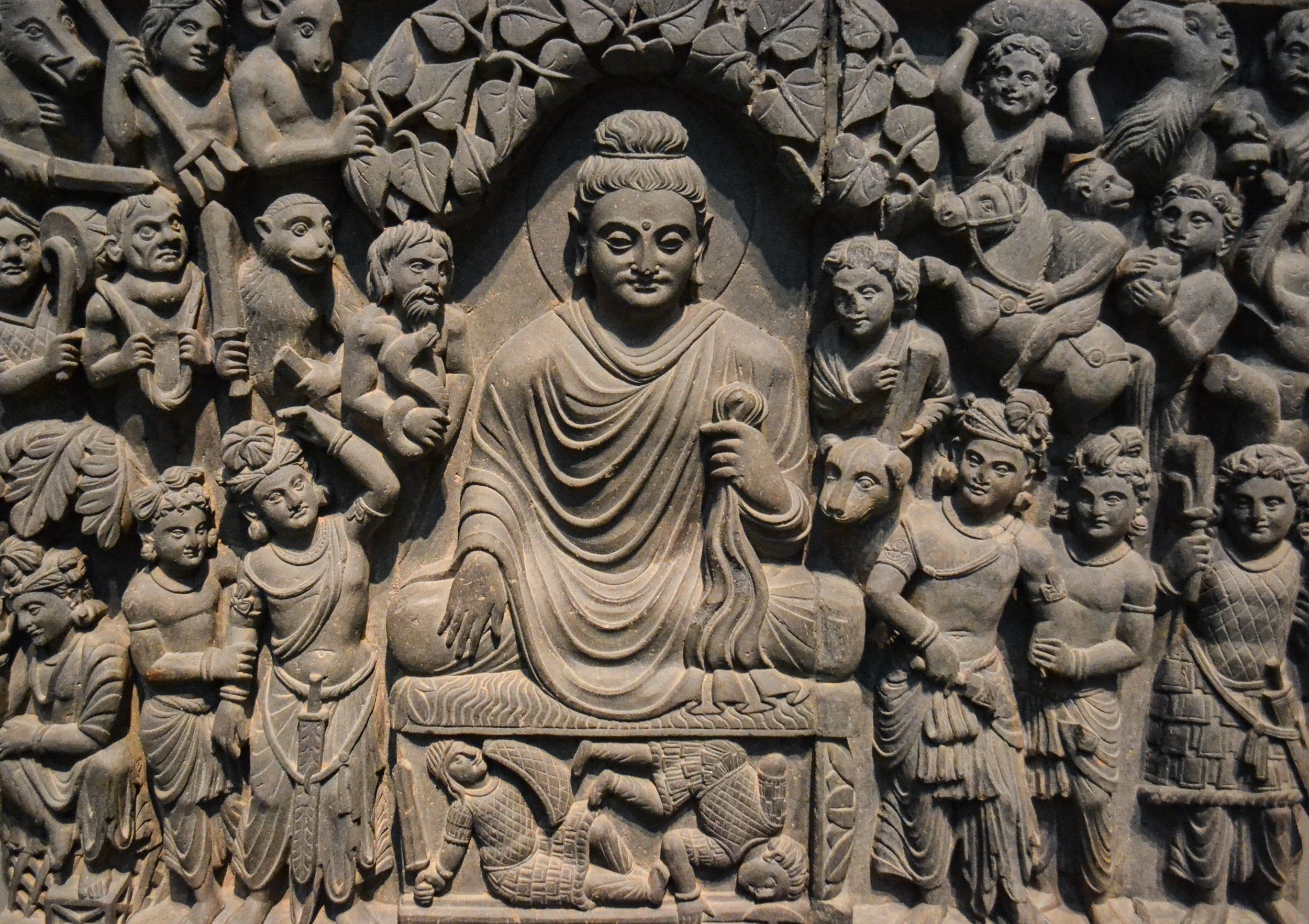
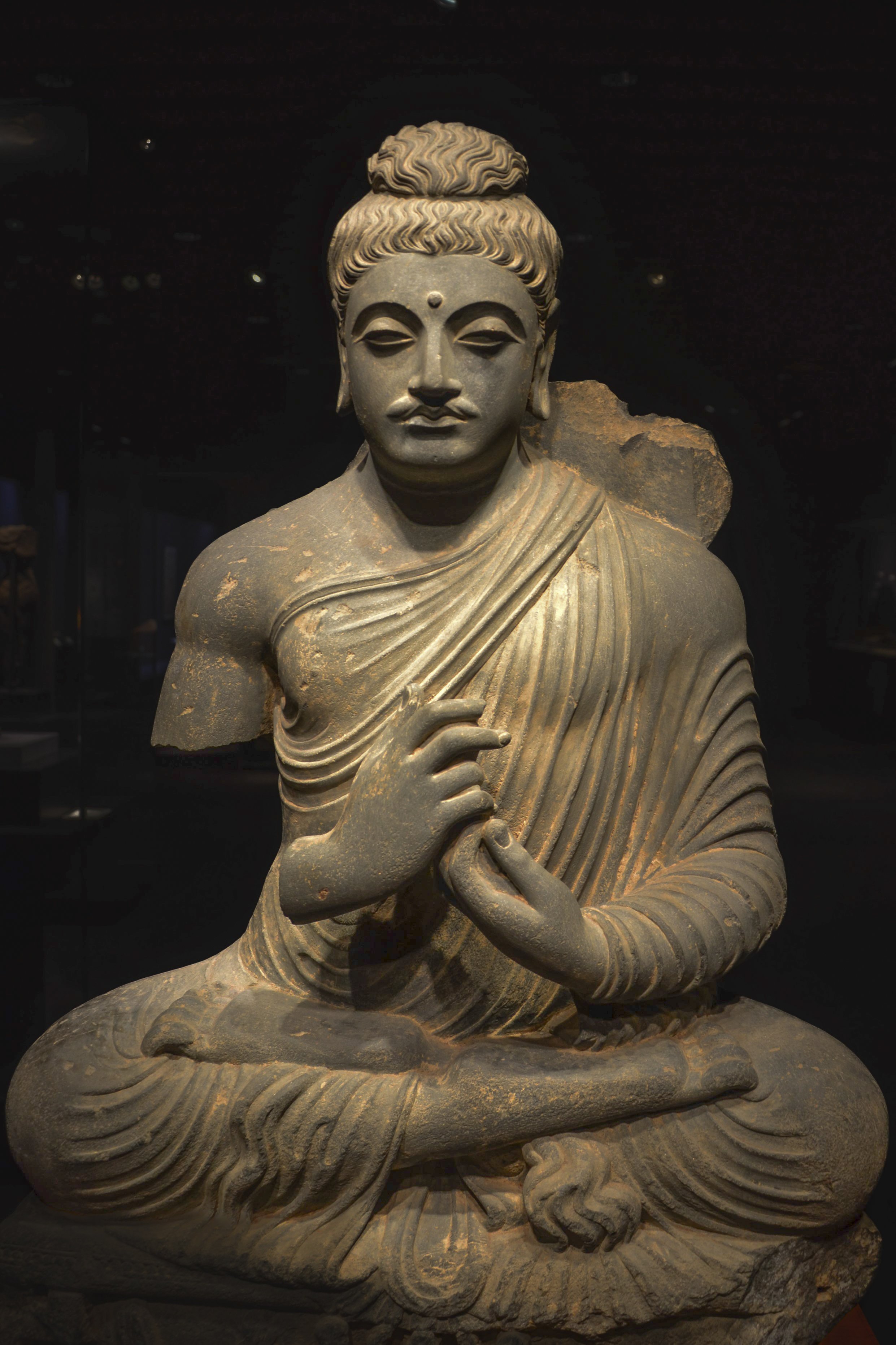
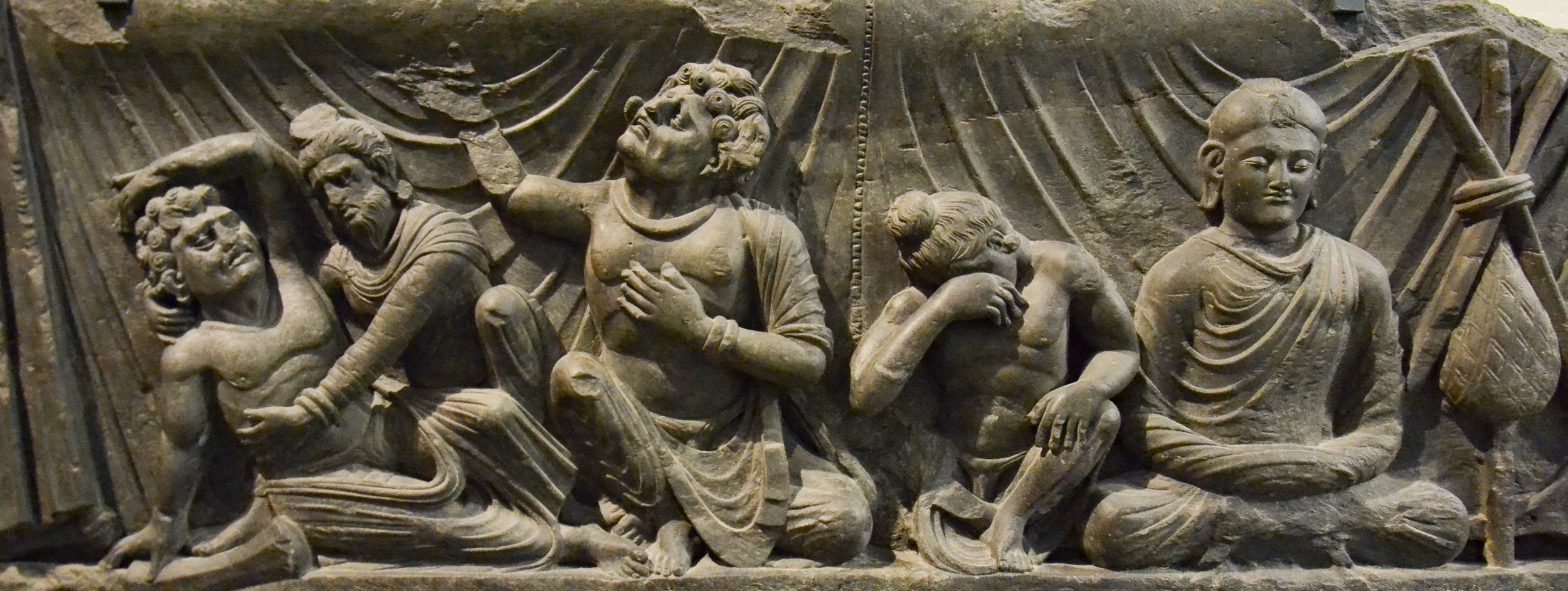
I’ve collected a series of images and encourage you to look through at the art style in Gandhara that was so influential on later Buddhist imagery. Much of this comes from the 2nd to 3rd centuries, which was the height of the Kushan Empire’s power.
Tarim Basin
Ruins at the ancient Kuchean city of Subashi, looking towards part of the Tianshan mountain range. Photo by author.
One of the main routes of the overland silk road was through the Tarim Basin. To the south it are the Himalayas and the Tibetan Plateau. To the north are the Tianshan mountains, and beyond that the region of Dzungaria, part of the Eurasian steppe. In the center of the Tarim Basin is the Taklamakan desert. Eons ago, it was a fertile inland sea, but over time it has dried up, so that the only remnants are in the eastern extremity—the swampy, stagnant former salt lake of Lop Nor. Despite this seemingly inhospitable land, settlements arose along the edges, where meltwater runoff from the mountains kept rivers flowing. Water could be found there to grow crops and even support thriving cities and kingdoms.
Ancient city walls at Subashi. Photo by author.
Thanks to the dry conditions of the Tarim Basin, many arts were preserved, including paintings and even documents, giving us keen insights into just what went on along the silk road in ancient times.
One of the larger polities around the time that Buddhism was spreading was the land of Kucha.
Kuchean history is not fully understood. We have mention of it in other documents, but it is known mostly through other sources and the archaeological traces left behind. We do have documents in a language that we believe was the language of Kucha, known as Kuchean or, likely erroneously, as Tocharian B, one of two—or possibly three—related Indo-European languages found in the Tarim Basin. It was once thought that Kucha was related to Kushan and the Yuezhi, though the language of Kushan appears to have been Bactrian, an Indo-Iranian language, instead.
The Buddha and disciples from the Qizil cave grotto paintings, 4th-5th Century, on display at the Metropolitan Museum of Art in New York. Photo by Author.
Kucha (or Kuqa or Kuche) likely started further east and then people moved west along the edge of the Tianshan mountains, likely pushed along by the Xiongnu and others who were fighting for dominance in the Gansu region. As such it is part of the northern route through the Tarim basin. While the majority of Kucha has since been lost, there are many sites, such as the ancient city of Subashi and the Qizil caves, which remain. In the Qizil caves, you can see ancient Buddhist statues and paintings by believers. The caves were dug out of the side of a cliff face, and would have provided shelter and shade, which kept the caves, and the art in them, well protected.
Image of the Buddha and disciples from a fresco in Miran, along the southern edge of the Tarim Basin. 3rd-4th Century, currently in the New Delhi National Museum. Photo by author.
This is where the monk Kumarajiva was from, making his way west towards Chang’an (modern Xian) and helping to spread Buddhism there.
There was another route along the south, where traces of loanwords show up that appear linked to the language of Kucha. Whether there were more speakers in that area or they came from other influences, there were definitely links across the region in terms of art and religion.
Dunhuang
Western edge of the Han era “Great Wall” in Dunhuang, near Yumenguan, the Jade Gate. Photo by author.
At the edge of the Han sphere of influence was the city of Dunhuang, where the northern and southern routes around the Tarim basin came together, leading towards the Gansu corridor and into the Yellow River region. Otherwise you were traveling over treacherous mountain paths towards the Yangzi or the Sichuan basin. When the Han dynasty pushed back against the Xiongnu, they established an outpost here, including an extension of their original “Great Wall”.
Yumenguan (玉門關) - this is actually a fortress built to house the soldiers who monitored people traveling from the Tarim Basin towards the Gansu region, and vice versa. Photo by author.
“Yumenguan”, the Jade Gate Pass, is mentioned in many of the stories of people passing through the region. A garrison here was supposed to keep track of who was coming and going, and provide protection against incursions by outside foes, such as the Xiongnu. This was the edge of empire, but it was also where many of the merchants and people who traveled back and forth along these desert highways would meet and come together.
Just a few of the Mogao caves that have not been built up in the way that others have, giving an impression of what people would have seen as they approached.
One of the famous sites of Dunhuang, today, are the Mogao caves. These are some of the most striking caves and examples of Buddhist artwork anywhere. While some of been damaged by erosion, many of the caves remain intact, and there are ongoing conservation efforts to try to minimize damage to and catalog the artwork that is inside.
The caves were first dug out in about the 4th century as a place to practice Buddhist meditation, but eventually it evolved into a system of over five hundred caves where people could worship. Elaborate carvings and paintings can be found throughout the cave system, which was actively being used and improved for roughly a thousand years. Today it is a UNESCO world heritage site.
Example of some of the paintings at Dunhuang. These have been exposed to the outside, and thus exposed to the elements over time, but there are many even more impressive paintings inside. Photo by author
Unfortunately, the popularity of the paintings has actually put them under threat. First there are those that were taken out and moved when early explorers like Aurel Stein came through, with expeditions sending samples off to London, Berlin, and elsewhere. But even today, as more people come to study or just to see the paintings, it has changed the humidity and pH levels in the caves, such that many are deteriorating at a much faster rate, and so access has been limited, but there are efforts to digitize many of them so that they can be safely viewed for generations to come.
Buddhist image of Shakyamuni from the Northern Wei dynasty. H has an ancient Buddhist swastika on his chest, a common symbol at this time, well before it was appropriated by the Nazis in the 20th century. From the Shanxi Museum of History. Photo by author.
China
When Buddhism came in the Han dynasty it was simply one of many religions. While we have examples and mentions of it, it was not as influential, and the Buddhist heartland remained in the West—in India, Kushan, etc. However, in the Southern and Northern Dynasties period, Buddhism gained immense patronage and saw much growth. From the third to 6th centuries there was even a reversal, as the Kushan Empire declined, and Central India saw a rise in Brahmanic traditions. Monasteries in the Yangzi and Yellow River region would become the geographic center of much of the Mahayana Buddhist practices, which themselves spread out to the rest of east and northeast Asia.
Image of the Buddha from the Northern Wei dynasty in 499 CE. From the Beijing Capital City Museum. Photo by author.
Converts during this period often went out in search of documents and manuscripts in an attempt to try to get at a more authentic version of the Buddha’s teachings. This was no doubt hampered by the fact that there were so many different writings by this time, particularly in the Mahayana tradition. The Buddhist canon is vast, and could fill up entire libraries. Debates over which sutras and which practices were more effective would continue throughout the historical period, and even today there are numerous schools that emphasize different things.
Through it all, there are some common threads as to the core nature of the historical Buddha, Siddharta Gautama, aka Shakyamuni, and his core principles. The Three Jewels, the Four Noble Truths, and the Eightfold Path remain at the heart of Buddhist teaching. This would prove both helpful and troubling to various states as they looked at how to use Buddhist teachings and thoughts to support their own aims at political power and stability.
Example of a Han dynasty watchtower from a funerary arrangement. There seem to be obvious similarities between these and the later pagoda towers, although many of the latter were not necessarily made for actual human use.
Temple design and practices were, in turn, influenced by the cultures of these areas just as much as Buddhism influenced them. Buddhist images, originally in the Gandharan style, began to take on their own characteristics. As with other regions, the face of the Buddha often reflected the people who were building the images, and we can see a change in the look of the Buddha as time progressed.
Furthermore, the temples changed. The stupa became more of a tower, and eventually transformed into wooden or stone pagodas. These then became standard for most East Asian Buddhist temples, and even became iconic images of various locations, such as the pagoda of Tōji, in Kyōto, which for centuries towered over the city, and was as iconic as the Eifel tower in Paris, or the Capitol Building in DC. Even today, these iconic buildings evoke the places where they reside.
Songyue pagoda, 523 CE. Photo by Siyuwj, CC BY-SA 4.0, via Wikimedia Commons
The oldest tower style structure that we have today is the Songyue pagoda in modern China. It was built on Mt. Song in modern Henan province in 523 CE, the Northern Wei period, and is one of the few remaining from this era. Many others were made of wood, a tradition that would pass on to the Korean peninsula and the Japanese archipelago, where we have an example in the oldest wooden buildings in the world at Hōryūji, built in the 7th century, about one hundred years after Buddhism first arrived in Japan.
-
Welcome to Sengoku Daimyo’s Chronicles of Japan. My name is Joshua, and this is Episode 84: The Middle Way through the Middle Kingdom.
First things first, thank you to Bodil, Gabe, and Lauren for donating to support the show on Ko-Fi and Patreon. If you’d like to join them, will have information at the end of the episode.
Also an apology—if my voice isn’t in tip-top shape, well, it seems that COVID finally found us after 3 years or so, and I’m on the tail end of it. So thank you for your understanding.
Last episode we talked about Siddhartha Gautama, aka Shakyamuni, the Historical Buddha, and his teachings, and how they spread, at least through the Indian subcontinent, with the patronage of rulers like Ashoka the Great. The original teachings, initially taught as an oral tradition, was eventually turned into a series of writings, called the Tripitaka.
As for how those writings came about, it’s worth talking about the languages involved. The native language of Shakyamuni was probably a language known as Maghadi, or something similar. But the Indian subcontinent, including the modern countries of India, Pakistan, Bangladesh, Bhutan, Nepal, and Afghanistan, is over three times the size of western Europe. There are at eight south Asian language families, with hundreds of different languages, depending on how you count them. The modern state of India counts 22 official languages, not including English. I mention this to point out that as the Buddha’s disciples spread his teachings, they were, by necessity, translating it into different languages.
There is a story that a student suggested to the Buddha that they make Sanskrit the official language of Buddhism. Even then, Sanskrit was considered a language of learning and education, much as Greek or Latin was in medieval Europe, but the Buddha rejected this and insisted that his teachings be taught in people’s own tongue. This proved great for reaching people, but over time there was a fear that the oral teachings might be lost, and so they were written down.
The oldest written Buddhist canon is generally agreed to be texts in Pali, commissioned in Sri Lanka. These are sometimes called the southern Tripitaka—or Tipitaka in Pali—and it is the primary canon for Theravada Buddhists. In the north, however, Sanskrit remained the prominent language of learning, and texts written down and transmitted in the north—particularly those that made it to China and on to Japan—were typically Sanskrit or translations of Sanskrit texts. This is what some refer to as the Northern Tripitaka. Both of these were transcriptions of the oral teachings that Buddhist monks were otherwise memorizing and presenting to the Buddhist community. That oral tradition, in fact, never really went away, and these early texts were more like a reference so that monks could check their memory. Chanting the sutras—and especially chanting from memory—remained a highly prized skill of Buddhist orators.
Now, the split between northern and southern texts is convenient, but it isn’t necessarily as simple as all that. We have plenty of examples of texts, particularly in the northern traditions, that don’t necessarily have an extant Sanskrit counterpart. In fact, the oldest extant sutras of any tradition that we have today are known as the Gandharan sutras, and written in the Ghandari language using a Karosthi script. Gandhara refers to a region centered north and west of the Indus river, in modern Pakistan, stretching to the Kabul river valley in modern Afghanistan and north to the Karakoram mountains, which is one of the interlocking ranges that form the boundary between modern Pakistan and India and modern China and the Tibetan plateau. It is believed to be the namesake of the city of Kandahar, in modern Afghanistan.
This area was important, and not just to Buddhism. For thousands of years it has been a crossroads between the Indian subcontinent, the area known as the Middle East, and the inner trade routes of central Eurasia. It was part of the conquest by Alexander the Great in the 4th century BCE, becoming part of his kingdom, but then it was lost in battle to the Mauryan empire, which Ashoka the Great ruled in the 3rd century BCE. The area later fell to Indo-Greek rule from members of the Greco-Bactrian kingdom to the north. The most famous ruler during this period was probably Menander I, who is also remembered as a patron of Buddhism, building more stupas and monasteries in the region.
The Hellenic Greco-Bactrians were eventually displaced by tribes of the Yuezhi, who themselves were being displaced by the Xiongnu, in central Eurasia. In this epic game of musical chairs, a branch of the Yuezhi eventually settled in the area, ruling a large territory, including Gandhara, under what is known as the Kushan empire. They had first moved into the area of Bactria and Sogdiana probably around the 1st or 2nd century BCE, and by the 1st century CE they were exerting authority over Gandhara. Around the time the Gandharan sutras were written down, in the 1st or 2nd centuries, Buddhism—especially Mahayana Buddhism—was flourishing in the region, and Kanishka the Great—don’t you love how all of these rulers are known as “the Great”, by the way?—ruled the Kushan empire, and hence Gandhara, in the early 2nd century. He is said to have been a great patron of Buddhism, although it was one of several religions, including Zoroastrianism, that flourished in the region at this time.
The Kushan empire is believed to be the same Yuezhi that we mentioned in episode 79, when we talked about the Han diplomat Zhang Qian, who had trekked through hostile Xiongnu, or Hunna, territory across much of what is now western China in the 2nd century BCE, seeking allies against the Hunna. At that point, the Yuezhi had had enough of war, however, and they declined to fight, preferring to settle where they were and eventually growing into the Kushan empire. That connection with the Han dynasty, however, likely was maintained through trade routes that continued to operate across the vast expanse of central Eurasia. The Han dynasty itself continued to send out diplomatic missions to the various states of central Eurasia, and of course there were trade routes.
As the Kushan empire expanded into the Tarim basin, it met once again with the Han, who had defeated the Hunna, and then claimed routes across the oasis towns of the desert regions. While the routes would have high and low periods, often depending on the state of various conflicts, in general it seems that Buddhist missionaries probably made it to the Han dynasty and the Yellow River region, and founded monasteries, as early as the first century CE and certainly by the second century. And, by our best understanding, the folks in these monasteries were already doing a lot of copying and translation of texts – both as a meritorious act, and to spread the word. Since this is around the time the Gandharan texts were written, they were likely a part of this larger tradition of copying and translating that was going on, although many of those early documents did not survive intact to the modern day.
One of the earliest records of Buddhism in the Han dynasty is a record dated to 65 CE. Liu Ying, Prince of Chu and son of Emperor Guangwu of Han, sponsored Buddhism—as well as a school of Daoism—in attempts to better understand longevity and immortality. While he was eventually accused of treason, putting something of a damper on his patronage of the religion, it is the first mention we have in the histories of Buddhism, and in some ways it speaks to something else about the initial acceptance of Buddhism.
While there were likely those well-versed in Buddhism, particularly in the community of foreigners from the Western Regions, evidence suggests that for many lay people it was just as likely about what people thought that the religion could do for them in this life as anything else. After all, there are many stories of miraculous events, and there was the concept of reincarnation and karma—the idea that by building merit, one could improve their lot in the next life. There was even a belief that by building merit, one could improve their lot in the current life—and apparently extend their life or even, possibly, gain immortality.
Sure, there were the more intellectual and philosophical endeavors, but for many people Buddhism was just as much about what it could do for them in the here and now. Stories of monks and other holy men fit in right alongside stories of Daoist immortals. In Han tombs, where Buddhist imagery is found, it is often found with or in place of the Queen Mother of the West—the same image that is found on many of the bronze mirrors that traveled across to the Japanese archipelago around this time. It was likely that many of the early stories that the laypeople heard were probably fragments as much as anything. Even with the Tripitaka written down, much of the transmission was still done orally. Furthermore, it was in translation—and probably a translation of a translation.
The earliest stories of Buddhism’s transmission—particularly the translation of texts into Sinitic characters, the lingua franca of East Asia—claim that first the Theravada canon, and then later Mahayana texts, were translated in the second century, with foreigners from Parthia and Kushan credited with the early translations. Others would continue the work, and at first it was mostly people from the Western Regions doing the translating.
One of the earliest stories of sutras making their way to the Han dynasty comes from the time of Liu Ying, when his brother, Emperor Ming, sat on the throne. The stories claim that the emperor saw an image of a golden Buddha, and that he requested either a statue or temple be erected. So he sent people off to Kushan, where they found two monks who would come back with them in 68 CE, bringing portraits and scripture—specifically the “Sutra of Forty-Two Chapters”, which the two monks helped translate into a Sinitic version at Baimasi, or White Horse Temple. As such, this “Sutra of Forty-Two Chapters” has been accorded a status as the first such Buddhist work to be brought to the area that is, today, modern China, and the White Horse Temple, located in Luoyang, is counted as one of the earliest temples in the Yellow River region. That said, there are a lot of questions as to the authenticity of this tale, though it does mirror others about the arrival of Buddhism in the East, even if we cannot verify the actual first temple or work.
Although Buddhism arrived during the Han dynasty, it wouldn’t really begin to fully develop until after the dynasty’s fall in the 3rd century. During the Southern and Northern Dynasties period, the metaphysical and doctrinal beliefs of Buddhism began to penetrate the elite circles in a more tangible way. Much of the philosophical underpinnings blended well with the interest at the time in “Dark Studies” and the school of “Pure Conversation”, which we discussed back in episode 72. While Buddhist temples, much like their Daoist brethren, found some sanctuary from the chaos that created this period in the mountains and hills—not to mention a bit of added spiritual cachet—it was really the opportunity to gain greater state patronage that also helped.
Monks like Zhi Dun began to reconcile Buddhist thought and doctrine with local beliefs. In some cases, local religious figures—including gods and other spirits—were incorporated into the Buddhist framework, often by their “conversion” to the Buddha’s teachings. This was one of the strengths of Buddhism—although it carried with it a framework of Indian religious teachings and thoughts, it was not exclusive in its cosmological outlook. Buddhism was more focused on helping one escape the suffering of this world, which would take you beyond all such things. As the doctrines were meant for all beings—not just humans, but for animals, spirits, gods, and even demons—there was nothing to necessarily exclude other beliefs. This helped some of the ethnic Han dynasties to accept and even promote Buddhism.
Meanwhile, some of the non-ethnic Han dynasties patronized Buddhism for either its miraculous powers or just because it was a foreign religion, much like they were foreigners in the Yellow River Basin. In many cases, state-sponsorship was a two way street. Dynasts would set themselves up as holy men, claiming to be Boddhisatvas. They would even appropriate the concept of the Cakravartin, a Buddhist “Golden-Wheel-Turning-King”, which had overtones of cosmic overlordship. I can see how that would fit in quite well with local concepts that a sovereign might lay claim to ruling “all under heaven” and be carrying out a “Heavenly mandate”.
Along the Yangzi River, Buddhist monks gained a certain amount of independence. They were not expected to bow to the sovereign, for example; an acknowledgment of their holy nature. In the northern Wei dynasty, however, it was a different story. There, the ruler was said to be no less than an incarnation of the Buddha, and a Chief Monk was selected to oversee the Sangha and no doubt ensure that the various Buddhist communities were in line with official dogma. At the same time, the government provided captured men and women to work fields to help pay for Buddhist temples and their work. Likewise, people would make merit by donating wealth and land to temples, in hopes of blessings either in this current life or in the next life. For their part, the temples were expected to act as storehouses or granaries—the wealth that poured into them would be used to help alleviate suffering, especially in the case of droughts or floods.
It soon became clear, however, that more wealth was going into the temples than was necessarily coming out. There were attempts to reign in this Buddhist establishment, often by limiting the number of temples or even the number of monks, as well as limiting what people could donate. These same edicts were undercut by the elites of the country, however, and often proved less than effectual.
Along with sutras and Buddhist teachings, Buddhist images and architecture spread widely. In India and the Western Regions, a key aspect of many temples was the stupa. This was a mound containing a relic of some sort. Originally these relics were said to be remnants of the Buddha, after he had been cremated. Later, it was said that the remnants of the Buddha turned hard, like crystal, and that the original remains were gathered up and distributed to even more stupas. Later they may contain other relics, as well.
The stupa was an important part of the Buddhist temple, but over time, its character changed. Instead of a mound like we still see in Southeast Asia, we start to see a building—a tower—which became a ubiquitous symbol of Buddhist temples in East Asia. This multi-level pagoda originally started off with simply three levels, often made of brick and stone, but over time it grew with five or seven levels. These towers were inspired by a description in the Lotus Sutra, a Mahayana text, that described a bejeweled seven-storey tower.
Speaking of the Lotus Sutra, this was one of the many teachings that made its way to East Asia, and a hugely influential one. It purports to tell the story of a sermon by the Buddha outside of those mentioned in the Theravada texts. The teachings expounded upon in the Lotus Sutra had a great impact on Mahayana Buddhism and how people viewed the teachings of the Buddha. For one, it also proposed the idea that the Buddha did not actually cease to exist when he attained nirvana, but is simply no longer visible. He still remains in the world to help all life find salvation from suffering. That goes along with the concept of the Bodhisattva, a being who attains a Buddha-like understanding but out of compassion remains in the world to assist others.
The Lotus Sutra also made claims such as the idea that anyone could attain Buddhahood, if they followed the teachings—and not just one particular set of teachings. It opened the idea that there were multiple vehicles—that is to say different practices—that would all get you to the truth, to Englightenment. Even the term “Mahayana” means the “Great Vehicle”, while Mahayana sees Theravada as “Hinayana”, the “Lesser Vehicle”. Both will get you where you need to be, but Mahayana offers an exapansion of teachings and texts that Theravada Buddhism does not necessarily accept as authentic. Indeed in Mahayana belief we also see a focus on multiple Buddhas with different specialties – not only the historical Buddha, but Vairocana, aka Dainichi Nyorai, the Great Solar Buddha, Amitabha, aka Amida Nyorai or Amida Butsu, and so on.
In comparison, the Theravada school tend to be more dogmatic on various points of practice and belief, claiming that they focus on the actual teachings of the Historical Buddha and not necessarily looking for extra texts and practices. There may have been Buddhas in previous ages that attained nirvana and departed this existence, but the Buddha of the current age is the historical Buddha, Shakyamuni. Another Buddha, Maitreya, is not expected for another five to ten thousand years—not until the teachings of the Buddha have been forgotten and are once again required. Acquiring freedom from this existence through nirvana is not necessarily one and the same with obtaining Buddhahood—the enlightened understanding required to save all beings.
There is another school, “Vajrayana”, the “Lightning” or “Diamond” vehicle. It focuses on tantric, or esoteric teachings, which practitioners believe provide a more direct, and faster method to enlightenment. Many secret teachings, or mikkyo in Japanese, can trace themselves in some way to these practices, though it likely didn’t make it to East Asia until the Tang dynasty or so in the 8th century, so we’ll come back to it when we get to things like Kuukai and Saichou, who brought Shingon and Tendai, respectively, to Japan in the early 9th century—about four centuries from our current chronological position.
Both the Mahayana and Vajrayana schools included the teachings from the Lotus Sutra, which would become one of the most important sutras, certainly by the Tang dynasty, as well as in the Korean Peninsula and the Japanese archipelago. Its widespread dissemination is often attributed to the famous monk Kumarajiva. Kumarajiva was a citizen of Kucha, one of the oasis towns along the northern edge of the Tarim Basin, and site of a bustling metropolis and capital of one of the largest oasis kingdoms in the Tarim basin. Even today, you can see remnants of the ancient city in the desert, and the dry conditions have preserved a number of artifacts, including plenty of texts referencing Buddhist and other beliefs.
Kumarajiva traveled from the peripheral city of Dunhuang, another site renowned for its Buddhist roots, especially the famous Mogao caves—a series of Buddhist grottoes built into a cliff face which, along with the dry conditions, have exquisitely preserved the early sculpture and painting, as well as, again, numerous documents. He came to Chang’an around 401, and he helped translated numerous Buddhist scriptures into Sinitic characters, which could then be shared and read by people across East Asia—everywhere in the ancient Sinic sphere of influence.
Besides the Lotus Sutra, another famous text told of the Buddha Amithabha, aka Amida Butsu in Japan. Amithabha’s teachings claimed that any who would call on the name of Amithabha, or just picture them in their mind with a sincere heart, would, on their death, find themselves reborn in a Western Paradise—a “Pure Land” where there were no distractions other than to meditate on the Buddha’s teachings and eventually attain freedom from this existence. Whereas many of the teachings and theological discussions of the various Buddhist schools could get quite complex—thus almost requiring any serious student to join a monastery if they wanted to truly study a particular flavor—the teachings of Amithabha were appealing to those without necessarily a lot of time or resources. It boiled down to a few practices that just about anyone could do. It didn’t require that you donate huge sums of money or land, or that you spend all your day copying scriptures. One could chant the name of Amithabha in the fields as you were working, or picture them in your mind as you prepared for bed.
These kinds of practices—the chanting of particular mantras or other such things—became a kind of thing people could do to help protect themselves or ward off evil. A particular example of this practice is preserved in a text from Dunhuang, which has a colophon explaining its purpose. According to Patricia Ebrey’s translation, the text, which was copied by someone named Sun Sizhong, was an incantation that, if said 7, 14, or 21 times a day, with various somatic and material components (willow twig to cleanse the mouth, scattering flowers and incense before the image of the Buddha, and kneeling and joining the palms of the hands) it would clear away the four grave sins, the five wicked acts, and other transgressions. “The current body would not be afflicted by “untimely” calamities, and one will be reborn into the realm of immeasurably long life. Plus, reincarnation in the female form would be escaped forever.”
On that last piece—yeah, Buddhism came with a little bit of baggage. In ordering all of life, men were seen as inherently higher on the ladder than women. This discrimination has been walked back or even abolished in some modern interpretations, but it was definitely present in older beliefs.
Besides the power of the incantation if said 7, 13, or 21 times a day, Sun Sizhong went on to explain that if someone recited it 100 times in the evening and then at noon and it will ensure rebirth in the “Western Regions”, while 200,000 recitations gets you perfect intelligence, and 300,000 recitations, one will see Amitabha Buddha face to face and be reborn in the Pure Land.
As you can probably start to see, there were many different beliefs and teachings that fell under the Mahayana teachings, and many of the texts were translations. Even those that had been translated into Sinitic, it was often done by foreigners for whom the local Sinic language was not their native tongue, so there was always a kind of awareness that important pieces might have been lost in translation along the way. In the 5th century, this led some monks to make the particularly long and dangerous journey all the way to Kushan and on to India, to access the original primary sources for themselves. One of these was a monk by the name of Faxian.
At the age of 62, Faxian decided to go to India to try to get to the heart of what the Buddha really taught. He set out in 399, traveled across the Tarim Basin and into the Kashmir region and the Indus Valley—Gandhara, in modern Pakistan. From there he traveled to central India and arrived at Patna, where he stayed and studied for three years. He traveled around, seeking out works in Sanskrit on Buddhsit ethics and teachings, studying the local languages as well. In 410 he made his way to the mouth of the Ganges and down to Sri Lanka, where he stayed for almost two years before boarding a ship and traveling home—traveling through the straits of Malacca and around Southeast Asia to take the sea route back to his home.
The journey was perilous, and at least twice the boat lost its way. According to the stories, some of his fellow travelers, who followed more Brahmanic teachings rather than Buddhist, believed that Faxian and his quote-unquote “heretical” teachings were what were leading them astray. Faxian was able to maintain order and he and his books eventually made it safely to the Shandong peninsula in or around 412.
He made his way down to Jiankang, aka modern Nanjing on the Yangzi river. There he spent the rest of his life translating the scriptures he had brought back. Others would make similar journeys, all to try to find more authentic versions of the texts—which usually meant finding the Sanskrit version—and then creating translations from those.
With the growth in popularity in Buddhism, it is probably little wonder that it eventually made its way over to the Korean peninsula. It is hard to say exactly when Buddhism arrived, but the Baekje annals in the Samguk Sagi claim that it was brought there by a monk of Central Asia descent in about 384. One year later, we are told the king of Baekje erected a temple and caused ten men to become monks.
The timing of this generally accords with some of the information in the Nihon Shoki, which claims that Buddhism first came from the Western Regions to the Han dynasty, and then to Baekje 300 years later, and then to Yamato about 100 years after that. While the dates aren’t exact, this generally accords with what we know of the way that Buddhism traveled to East Asia and to Baekje, at least.
Although we have textual evidence, there isn’t much archaeological evidence for Buddhism on the Korean peninsula in this time outside of urban centers. That is where we find temple rooftiles and other indications that Buddhism was practiced, but at the time it was probably something more common amongst elites than the common people, at least in the 4th and early 5th centuries. With the invasions by Goguryeo and the loss of northern territory in about 475, it did gain increased patronage. Still, it wasn’t until the 6th century that it really left the urban centers, which is roughly the time we are talking about with the Yamato sovereign Ame Kunioshi, aka Kimmei Tennou.
Next episode we’ll get into just how Buddhism came over to the islands—or at least what is recorded and what we have evidence for—in the sixth century. We’ll also talk about its reception and its patronage by the famous Soga clan.
Until then, thank you for listening and for all of your support. If you like what we are doing, tell your friends and feel free to rate us wherever you listen to podcasts. If you feel the need to do more, and want to help us keep this going, we have information about how you can donate on Patreon or through our KoFi site, ko-fi.com/sengokudaimyo, or find the links over at our main website, SengokuDaimyo.com/Podcast, where we will have some more discussion on topics from this episode.
Also, feel free to Tweet at us at @SengokuPodcast, or reach out to our Sengoku Daimyo Facebook page. You can also email us at the.sengoku.daimyo@gmail.com.
And that’s all for now. Thank you again, and I’ll see you next episode on Sengoku Daimyo’s Chronicles of Japan.
References
Lewis M. E. (2009). China between empires : the northern and southern dynasties (First Harvard University Press paperback). Belknap Press of Harvard University Press.
Best, J. (2006). A History of the Early Korean Kingdom of Paekche, together with an annotated translation of The Paekche Annals of the Samguk sagi. Cambridge (Massachusetts); London: Harvard University Asia Center. doi:10.2307/j.ctt1tg5q8p
沈福伟 (1996). Cultural flow between china and outside world throughout history (1st ed.). Foreign Languages Press.
Skilton, Andrew (1994). A Concise History of Buddhism. Barnes & Nobles Books, by arrangement with Windhorse Publications. ISBN 0-7607-4829-2.
Ebrey P. B. (1993). Chinese civilization : a sourcebook (Second edition revised and expanded). Free Press.




